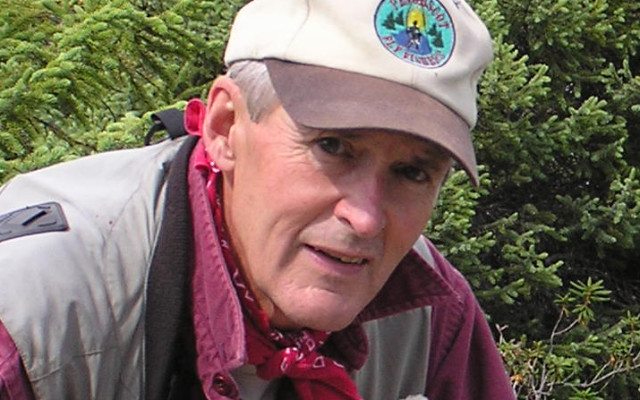
Deer yard protection: SAM leads the charge
By V. Paul Reynolds
August 23 at Jeff’s Catering in Brewer, David Trahan, the executive director of the Sportsman’s Alliance of Maine (SAM), was the guest speaker at a Deer Yard Forum hosted by some Bangor area state Republican legislative candidates.
Gerry Lavigne, a retired state deer biologist and wildlife consultant for SAM, joined Trahan at the podium to talk about the history of Maine’s declining deer population in Maine’s North Woods and what can be done to turn things around.
Trahan said that “predation and habitat loss have led to the collapse of the deer population in northern, eastern and western Maine. At one time, 10 percent of the landscape was deer wintering habitat. Now it is just 3 percent!”
In an effort to end this “death spiral of suitable deer habitat,” Trahan said, “SAM has spearheaded three initiatives to restore deer wintering habitat:
1. A change in the law that requires the Land for Maine’s Future Program (LMF) to prioritize its funding and land conservation purchases toward acquiring known deer yards.
2. Purchased deer wintering areas will be held in Trust for IF&W and managed by this agency.
3. SAM helped negotiate a $40 million state appropriation, which will be matched 3 to 1 by federal funding and used to purchase strategically important deer wintering areas in Maine.”
SAM also played a part in the new doe permit system. Hunters will pay $12 for their doe permits this season. This “new” money will be also earmarked solely for deer yard protection programs. This fall for the first time hunters will be able to harvest both a buck and a doe, with appropriate permits.
Trahan said that deer yard purchases had already begun. SAM will soon announce the acquisition by the state of a major deer wintering area in southern Aroostook County.
During a question and answer period, biologist Lavigne pointed out that predation on healthy wintering deer in the North Woods by both coyote and bears has been a significant cause in deer population declines. Lavigne said that predators also take about 50 percent of the spring fawns that don’t survive.
Responding to a question about whether coyotes engage in random killing, even when they are not hungry, Lavigne explained that all predators, coyotes included, have no compunctions about killing prey whenever the opportunity arises. The career deer biologist explained that this is called “surplus killing” and is not at all unusual.
Other positive news regarding deer yard protection, said Trahan, is the creation of the Aroostook County White-tailed Deer Collaborative (ACWDC). The mission of the collaborative is to raise private money to support deer yard protection and management in the County. With support and leadership of Aroostook sportsman Jerry McLaughlin, area sportsmen have already raised $20,000. This money, along with hours put in by volunteers on feed plot management in the County deer yards, will generate additional matching money from the Feds, on a 3 to 1 ratio. Other members of the ACWDC are Andrew Ketch, Rob Keiffer and Bruce Frost.
Individuals interested in donating to this private fund for deer yard enhancement in Aroostook County should contact David Trahan at 207-623-4589, david@samofmaine.org, or Jerry McLaughlin at 207-592-2516, jmguideservice49@gmail.com.
At the conclusion of the Forum, both Lavigne and Trahan were applauded enthusiastically by those in attendance. Northwoods Sporting Journal editor V. Paul Reynolds publicly thanked both of the speakers for “their leadership and hard work.” He said that in all the years that he had been writing about the Maine outdoors, this deer-yard protection package was the most historic deer-management initiative in his memory.
The author is editor of the Northwoods Sporting Journal. He is also a Maine Guide and host of a weekly radio program “Maine Outdoors” heard Sundays at 7 p.m. on The Voice of Maine News-Talk Network. He has authored three books. Online purchase information is available at www.sportingjournal.com, Outdoor Books.